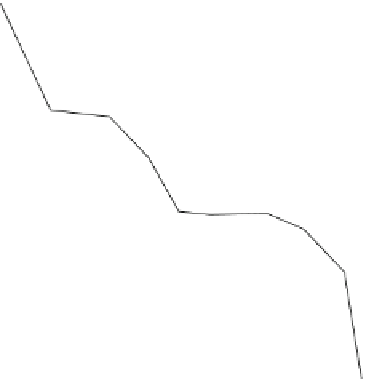Geology Reference
In-Depth Information
Continent-Ocean transition
400
350
300
250
200
150
10
0
50
450
M
a
ORDOV.
SILURIAN
DEVONIAN
CARBONIFEROUS
PERMIAN
MIAN
TRIA
TRIASSIC
J
J
URASSIC
CRETACEOUS
CRETACEOUS
PALEOGENE
N
EOGENE
EOGENE
NEO
km
Cape Fold
orogeny
Kalahari
epeirogeny
EARS
uplift
1
1
2
2
Cape-Karoo Basin
n
3
4
km
1
2
1
Paraná Basin
3
2
km
2
1
NON-DEPOSITION
AND/OR EROSION
3
2
4
Congo Basin
Congo
3
Fig. 13.15
Backstripped tectonic subsidences of basement of the
CKB (Cloetingh et al.
1992
), PB (Zalan et al.
1990
; Milani and de
indicate: (1) initial early Paleozoic subsidence in the CKB and PB, and
(2) generalized Carboniferous to Triassic subsidence in all the three
basins, followed by (3) Late Jurassic and (4) mid-Cretaceous episodic
subsidence events that are most pronounced in the CB. Black arrows
pointing-up represent main uplifts related to the Kalahari epeirogeny
Following the Pan African-Brasiliano orogens (ca.
500-800 Ma), widespread northerly-derived upper
Neoproterozoic-Cambrian red-beds (the upper Lindian
Supergroup
preferentially preserved across the Central African and
Kalahari Shields (Fig.
13.7
). These earliest Phanerozoic
sequences were onlapped in the extreme south by a wide
Ordovician-Devonian shallow marine platform (the Cape
and
the Upper Nama Group) were













































































































































































Search WWH ::

Custom Search